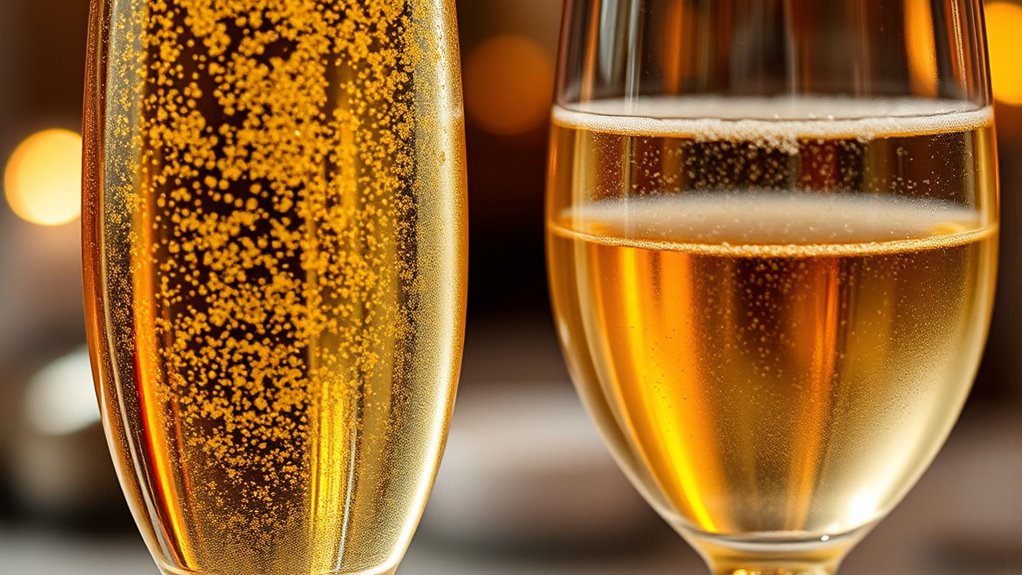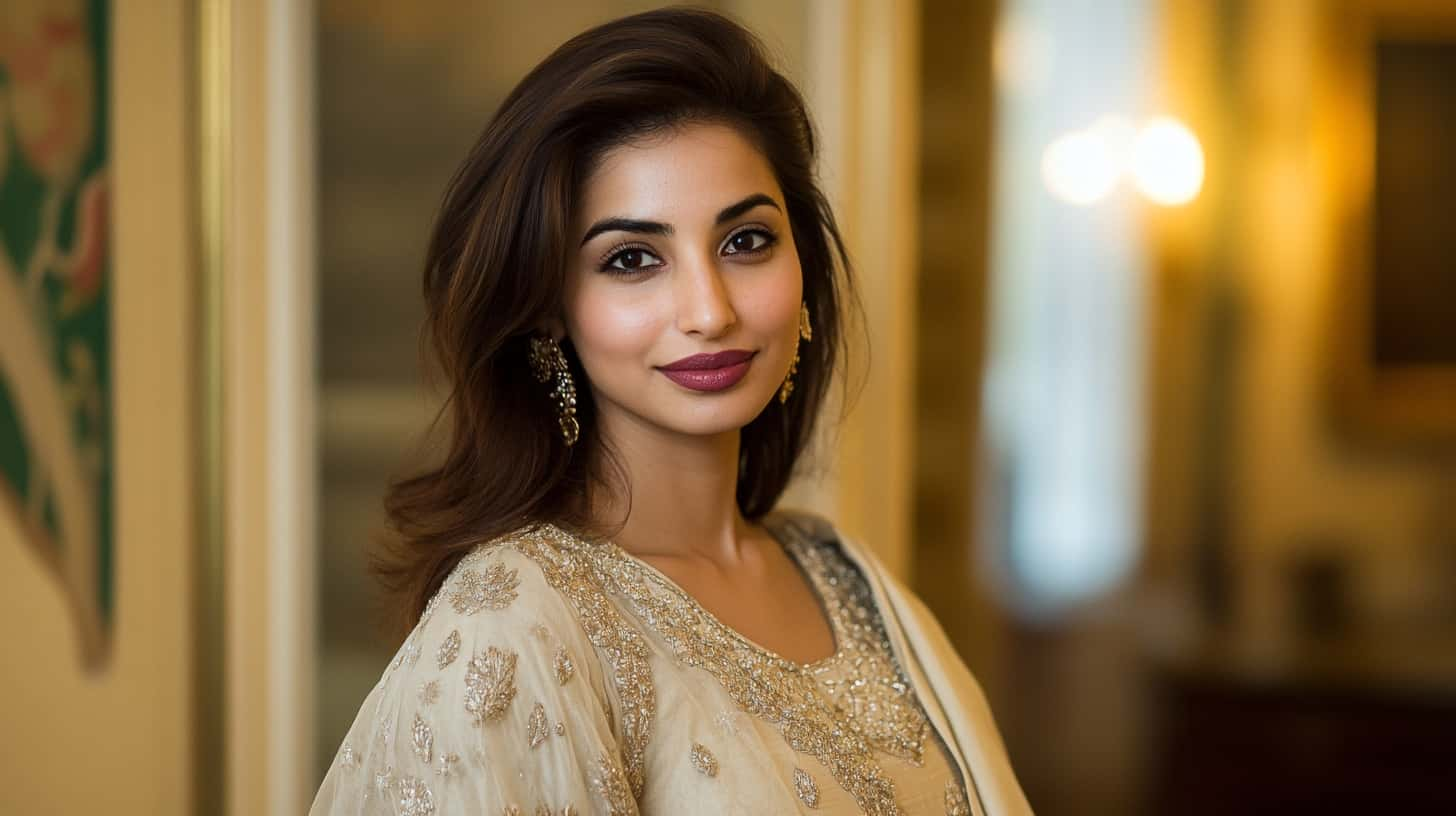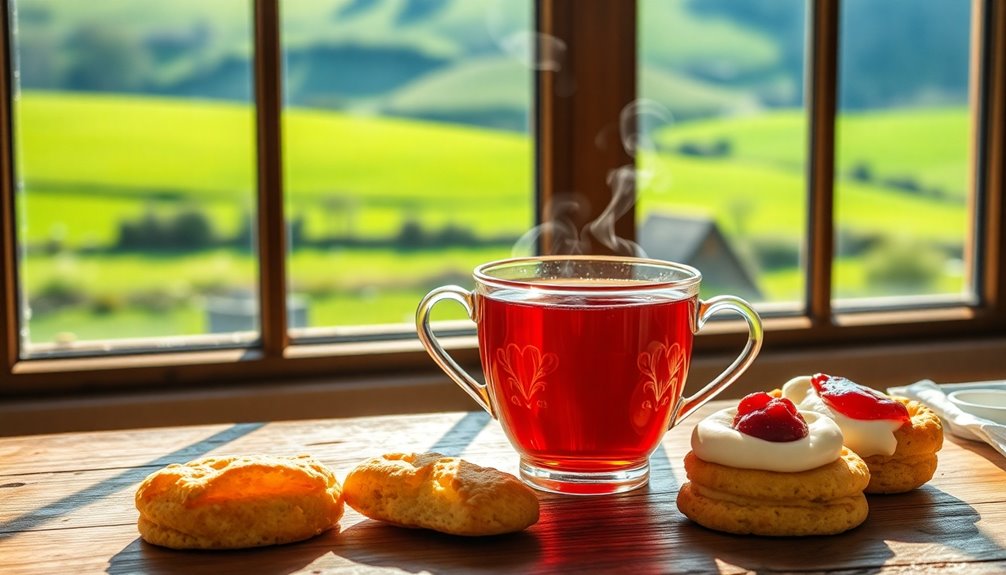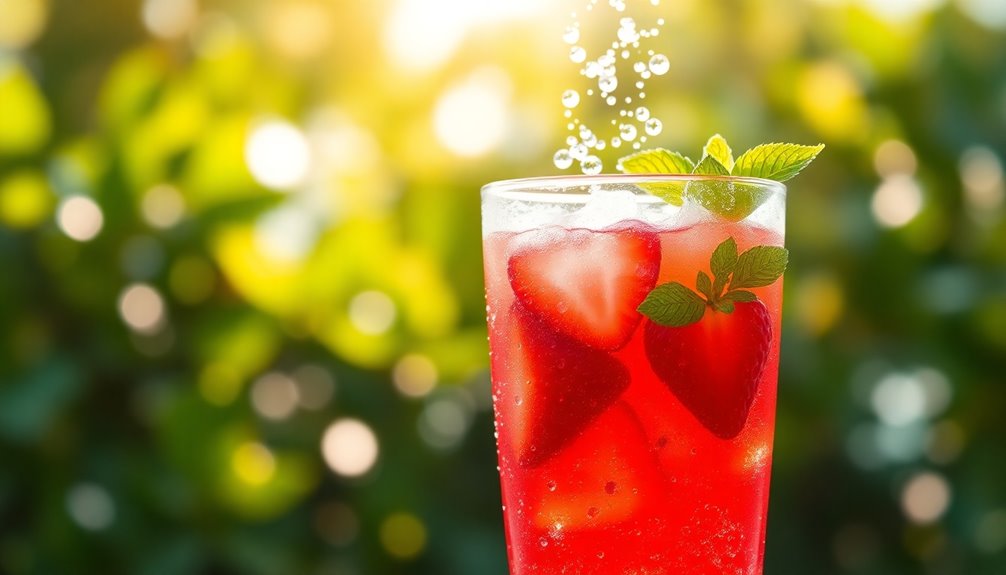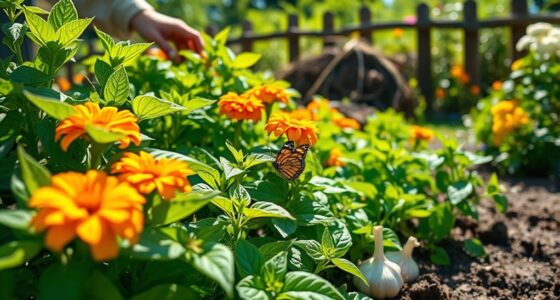Champagne differs from other sparkling wines mainly because it’s made in the Champagne region of France using the traditional méthode champenoise, which creates fine bubbles and complex flavors through bottle fermentation. Other sparkling wines might use the Charmat method, producing larger bubbles and less depth. Premium Champagne often ages longer, developing layered richness and elegance. If you want to know how these methods shape taste, texture, and authenticity, there’s more to uncover.
Key Takeaways
- Champagne is produced exclusively in France’s Champagne region using traditional méthode champenoise, while sparkling wine can be made worldwide with various methods.
- Champagne undergoes secondary fermentation in the bottle, creating finer bubbles and more complex flavors compared to the larger bubbles of Charmat-method sparkling wines.
- Vintage Champagne is aged for several years, developing layered flavors and richness; non-vintage sparkling wines blend multiple years for consistency.
- Production standards and regulations for Champagne emphasize heritage, craftsmanship, and strict geographic origin, unlike many other sparkling wines.
- The traditional production process and aging in Champagne result in a refined, sophisticated profile that distinguishes it from other sparkling wines.
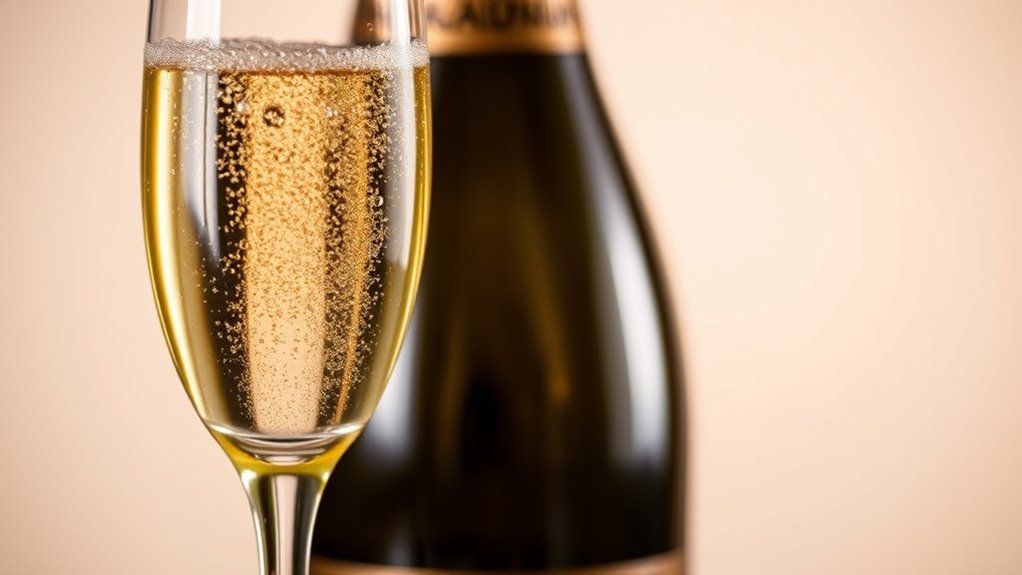
Ever wondered what sets Champagne apart from other sparkling wines? It all comes down to a combination of traditional production methods and the aging process, particularly vintage aging, which plays a significant role in defining its unique character. Champagne is made exclusively in the Champagne region of France, following strict guidelines that include specific production techniques. These methods involve a secondary fermentation in the bottle, which creates those iconic bubbles. This process, known as méthode champenoise, is labor-intensive but essential for producing the fine, persistent bubbles Champagne is known for. Other sparkling wines often skip or modify this process, using methods like Charmat, which involves fermentation in large tanks. This results in a different texture, often with larger bubbles and less complexity.
Vintage aging is another key factor that distinguishes Champagne. While many sparkling wines are non-vintage, blending wines from multiple years to achieve consistency, vintage Champagne is made from grapes harvested in a single exceptional year. The aging process for vintage Champagne typically extends longer—sometimes several years—allowing the wine to develop more complex flavors and a refined mousse. During this period, the wine undergoes a slow maturation on the lees (dead yeast cells), which adds depth, creaminess, and nuanced richness to the final product. Vintage aging is a deliberate choice that elevates the style, making it more suitable for special occasions and connoisseurs who seek complexity and depth in their sparkling wine. Additionally, the production techniques used in Champagne emphasize craftsmanship and tradition, setting it apart from mass-produced alternatives.
Production methods greatly influence the final taste and texture of Champagne versus other sparkling wines. The traditional méthode champenoise involves a lengthy process of secondary fermentation in the bottle, riddling to collect sediment, and disgorging to remove it. This meticulous process results in a wine with a fine, persistent bubble, a balanced acidity, and layered flavors. In contrast, many other sparkling wines, especially those made via the Charmat method, are produced more quickly and at a lower cost. They often emphasize freshness and fruitiness rather than complexity or aging potential.
Ultimately, what sets Champagne apart is its adherence to time-honored production techniques and its capacity for aging, especially vintage Champagne. These elements contribute to its distinctive profile—elegant, complex, and layered—making it a symbol of celebration and craftsmanship. When you compare it to other sparkling wines, you’ll notice that the production methods and vintage aging practices are what elevate Champagne to a level of sophistication and finesse that’s hard to match elsewhere.
Frequently Asked Questions
Can Sparkling Wine Be Aged Like Champagne?
Yes, you can age sparkling wine like champagne, but it depends on the type. Bottle aging allows flavor development and complexity over time, especially with higher-quality wines. Sparkling wines with good structure and acidity, such as vintage or prestige cuvée, age better. However, most standard sparkling wines are best enjoyed young to preserve their freshness and effervescence. Proper storage in a cool, dark place enhances aging potential.
What Grapes Are Used in Non-Champagne Sparkling Wines?
You’ll find that non-champagne sparkling wines often use a variety of vibrant grape varieties like Pinot Noir, Chardonnay, and Pinot Meunier, along with others like Riesling, Moscato, and Semillon. These wines showcase unique winemaking techniques that highlight their diverse grape origins. By blending these grape varieties, winemakers craft lively, flavorful sparkling wines that differ from Champagne’s traditional methods, offering a broad spectrum of bubbles and tastes to enjoy.
Are There Health Differences Between Champagne and Sparkling Wine?
You might notice that the health differences between champagne and sparkling wine are minimal. Both typically have similar alcohol content, usually around 12%, and comparable sugar levels, though some varieties might be sweeter. Drinking in moderation is key regardless of your choice. Keep in mind that higher sugar levels can impact calorie intake, so opt for dry options if you’re mindful of sugar and calorie consumption.
How Does Bottle Pressure Differ Between Champagne and Sparkling Wine?
You’ll notice that champagne typically has higher bottle pressure, around 90-100 psi, resulting in more vigorous carbonation. Sparkling wines, on the other hand, usually have lower pressure, about 60-80 psi, giving a gentler fizz. This difference in carbonation levels affects the mouthfeel and overall experience. So, when opening a bottle, expect champagne to have a more lively, bubbly burst compared to the softer sparkle of other sparkling wines.
Is Sparkling Wine Suitable for Cooking or Recipes?
Think of sparkling wine as a versatile chef’s secret ingredient—yes, it’s perfect for cooking! You can deglaze pans, add depth to sauces, or create tender seafood dishes. Its lively bubbles and crisp flavor enhance food and complement flavor pairings beautifully. Just remember to choose a dry variety, and you’ll find sparkling wine elevates your recipes, adding a touch of elegance and sparkle to your culinary creations.
Conclusion
Think of champagne and sparkling wine as two musical notes—both lively and delightful, but each with its own unique melody. Whether you prefer the refined elegance of champagne or the diverse flavors of sparkling wine, you’re savoring a celebration in every sip. So, next time you raise a glass, remember, you’re dancing to a symphony of bubbles—each one adding sparkle and joy to your special moments. Cheers to finding your perfect harmony!
